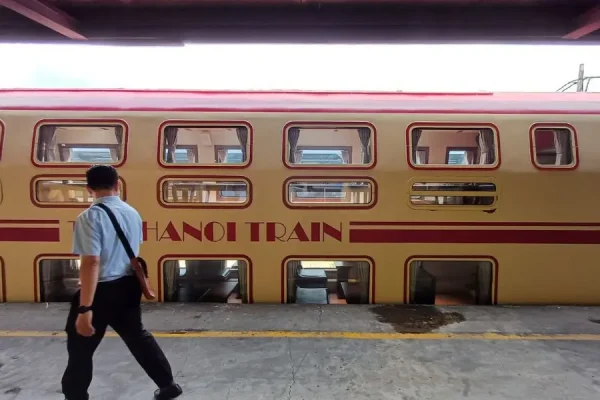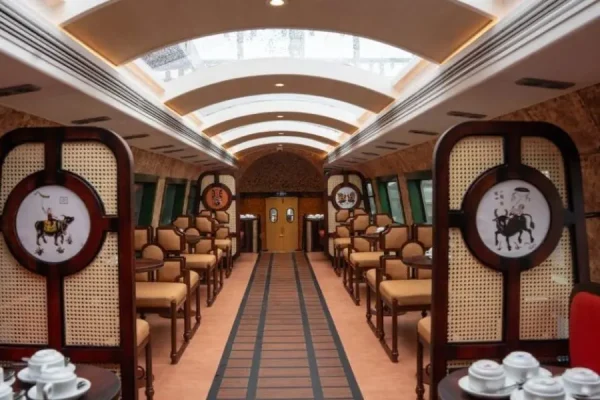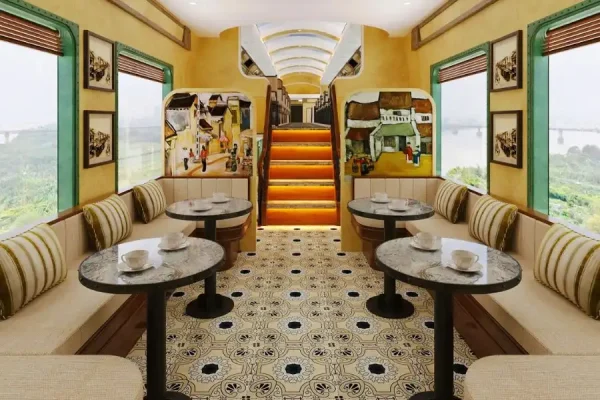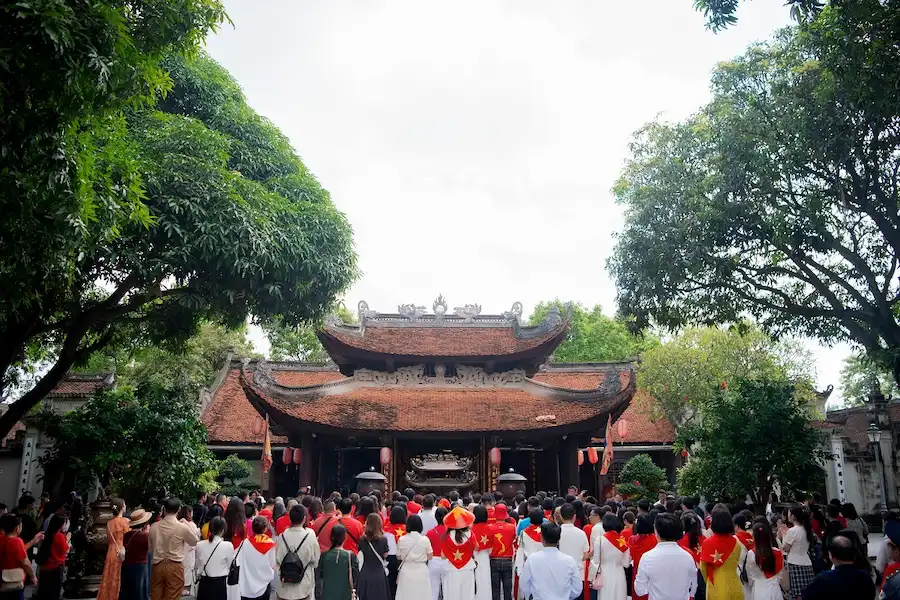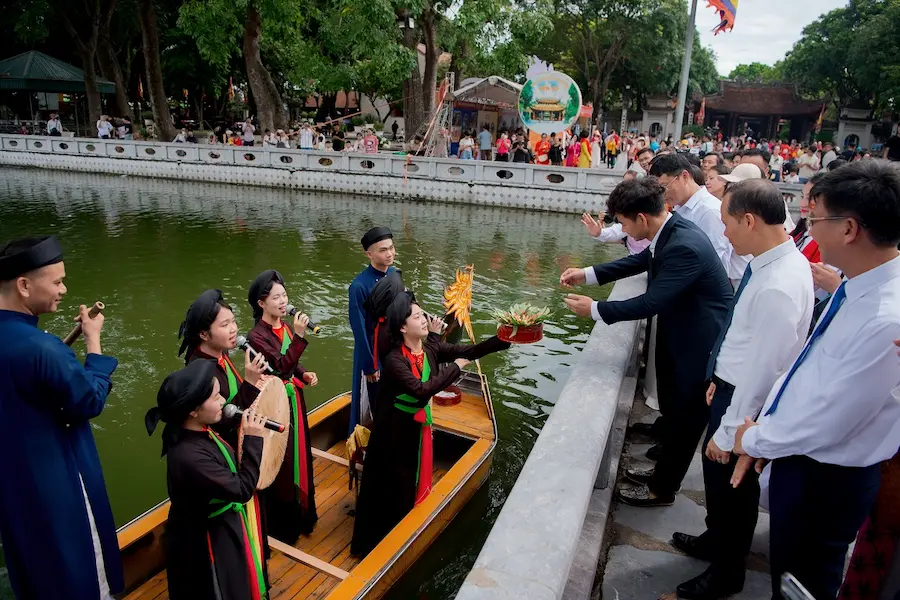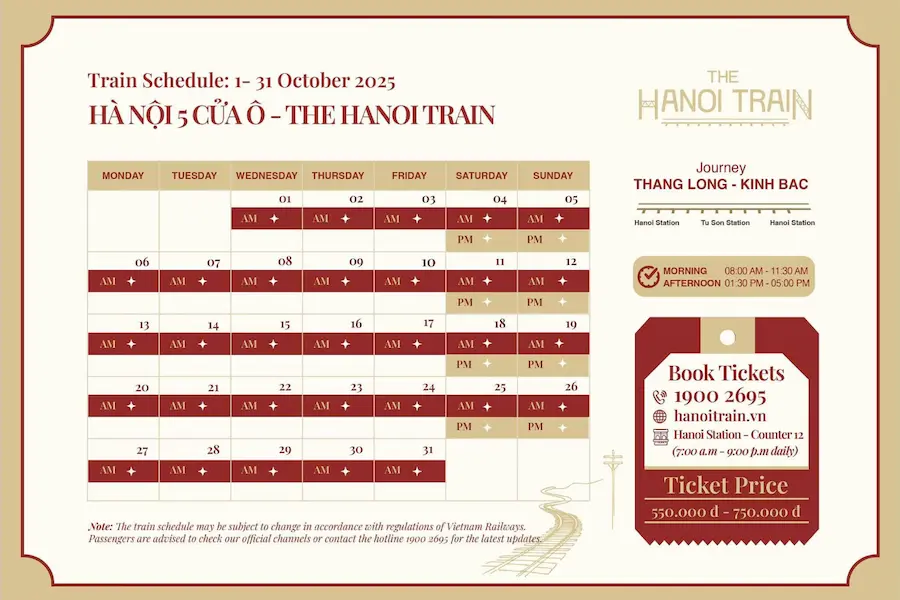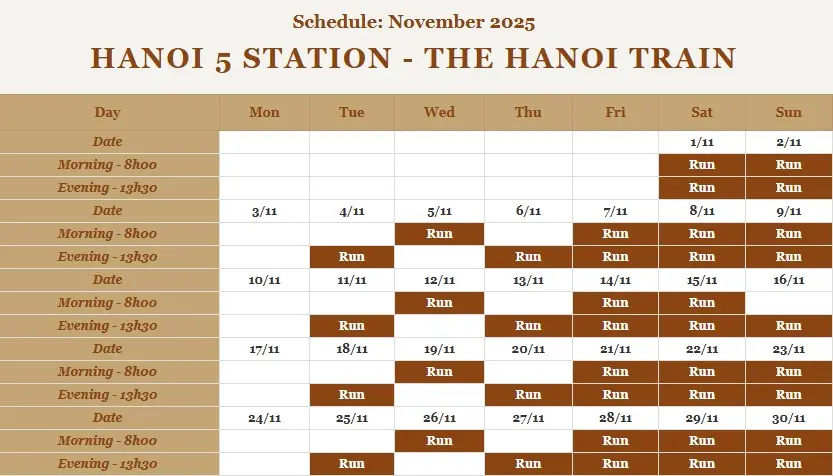When you visit Vietnam, there are countless ways to dive into the country’s culture, but few are as unique and immersive as The Hanoi Train. Officially launched in September 2025, this cultural tourist train isn’t just about getting from A to B – it’s about bringing Hanoi’s heritage to life. Designed as a rolling museum and stage, The Hanoi Train takes you on a journey that combines history, music, and traditional crafts, all within a convenient half‑day experience.
What is The Hanoi Train?
The Hanoi Train, also known as Hà Nội 5 Cửa Ô, is a specially designed double‑deck tourist train operated by Vietnam Railways. Each carriage is themed after one of Hanoi’s historic five city gates, once the symbolic entrances to Thăng Long, the ancient capital. This means that every detail – from the interior design to the performances on board – connects passengers with the story of Hanoi.
But this isn’t just about sitting and watching. Onboard, travelers can enjoy live music (think Quan họ folk songs and other northern styles), sample local snacks, and learn about traditional crafts. When the train stops in Bắc Ninh, the cultural heartland of northern Vietnam, passengers are taken by shuttle to visit local landmarks like Đền Đô Temple and experience heritage activities up close.
Why this isn’t just “cute marketing” — the cultural angle
This train was intentionally designed as cultural storytelling, not merely transport. On board you’ll likely see curated displays, listen to live traditional music (Quan họ, ca trù, chèo), try local snacks, and have short interactive craft demos at the Bắc Ninh stop (Đền Đô, Đông Hồ painting, bánh Phu Thê). In other words: it’s an orientation capsule to Northern Vietnamese heritage — Thăng Long (Hanoi) on one end, the Quan Họ cradle in Bắc Ninh on the other. If you’ve only got limited time in Hanoi, this is a concentrated slice of cultural context with the convenience of guided logistics.
Visiting Dong Ho Temple
Enjoy Quan Ho folk songs and interact with artists from the Kinh Bac region
Route and Schedule
The Hanoi Train runs between Hanoi Railway Station and Tu Son in Bac Ninh, a trip that takes about 45–50 minutes one way. The entire program, including stops and cultural activities, lasts about 3.5 hours.
Regular schedule:
- Morning departure: 08:00 fromHanoi
- Afternoon departure: 13:30 from Hanoi
- Evening departure: 20:30 from Hanoi
These two round trips are the core “Thăng Long – Kinh Bắc” service. Occasionally, special evening runs are added, but for now, plan around the two daily departures.
Schedule: 1/10 – 31/10/2025
Schedule: 1/11 – 30/11/2025
Ticket Prices
At launch, ticket prices for The Hanoi Train were set at three tiers:
- 550,000 VND ~ 22 USD for first‑floor seats
- 650,000 VND ~ 26 USD for second‑floor seats
- 750,000 VND ~ 30 USD for VIP carriage seats
Each ticket includes one drink and a sweet or savory cake, as well as participation in onboard and offboard cultural experiences. A Vinbus shuttle transfer to Đền Đô Temple and nearby heritage sites is also part of the package.
⚠️ Important to note: Some sources mention that VAT (8%) and service charges (10%) may not be included in the ticket price. Travelers should confirm the final fare with their booking agent to avoid surprises.
Onboard experience — what to expect (practical)
Seating & vibes: double-decker carriages with themed interiors; some outlets describe service levels and comfort similar to a boutique hotel-lounge on rails. Expect a snack and drink included at basic fares.
Live elements: scheduled cultural performances and talks about the five gates and the Thăng Long story. You might be invited to an interactive craft or a short demo at the Bắc Ninh stop.
Transit extras: transfer buses are usually provided to local sites (e.g., Đền Đô) so you don’t have to navigate local transport.
What Makes The Hanoi Train Special
While Hanoi’s Old Quarter and street food are obvious highlights, The Hanoi Train provides something different: a curated cultural immersion in a short amount of time. Here’s what sets it apart:
- Cultural storytelling: Each carriage celebrates a piece of Hanoi’s history, making the train itself part of the experience.
- Live performance: From traditional Quan họ songs to demonstrations of folk crafts, you’ll see Vietnam’s heritage performed in real time.
- Convenience: With guided transfers and pre‑arranged activities, there’s no need to plan complex logistics – you just hop on and enjoy.
- Scenic travel: The short rail ride itself is a pleasant escape from the chaos of Hanoi traffic.
Who Should Ride The Hanoi Train?
This experience is especially ideal for:
- Culture‑seekers who want more than just sightseeing.
- Families and older travelers who prefer a managed, comfortable program.
- Photography lovers looking for a visually unique backdrop.
If you’re the type who enjoys independent deep dives into villages and extended stays, you may find The Hanoi Train more of a sampler. But for most visitors, it’s a perfect way to taste northern Vietnam’s cultural richness.
Travel Tips for The Hanoi Train
- Book in advance: Seats are limited, and departure times are fixed.
- Compare ticket classes: Decide if the VIP carriage is worth the upgrade based on comfort and inclusions.
- Check language options: While there is English commentary available, not every performance may be translated.
- Bring cash: For tips or small purchases during the cultural stop.
Adding The Hanoi Train to Your Hanoi Itinerary
A morning or afternoon journey on The Hanoi Train can easily fit into your trip. Pair it with an Old Quarter walking tour or a street food exploration on the same day for a balanced mix of urban bustle and cultural storytelling. Many agencies can bundle it into a custom tour for you – for example, vietnam local tour operators can arrange packages that combine the train with other Hanoi highlights.
Final Thoughts
The Hanoi Train is more than just a ride – it’s a moving cultural showcase designed to make Hanoi’s history and traditions accessible in just a few hours. With a thoughtful blend of live music, craft heritage, and guided exploration, it’s one of the freshest ways to experience the capital. Whether you’re here for a week or just passing through, this short journey offers big cultural value.

